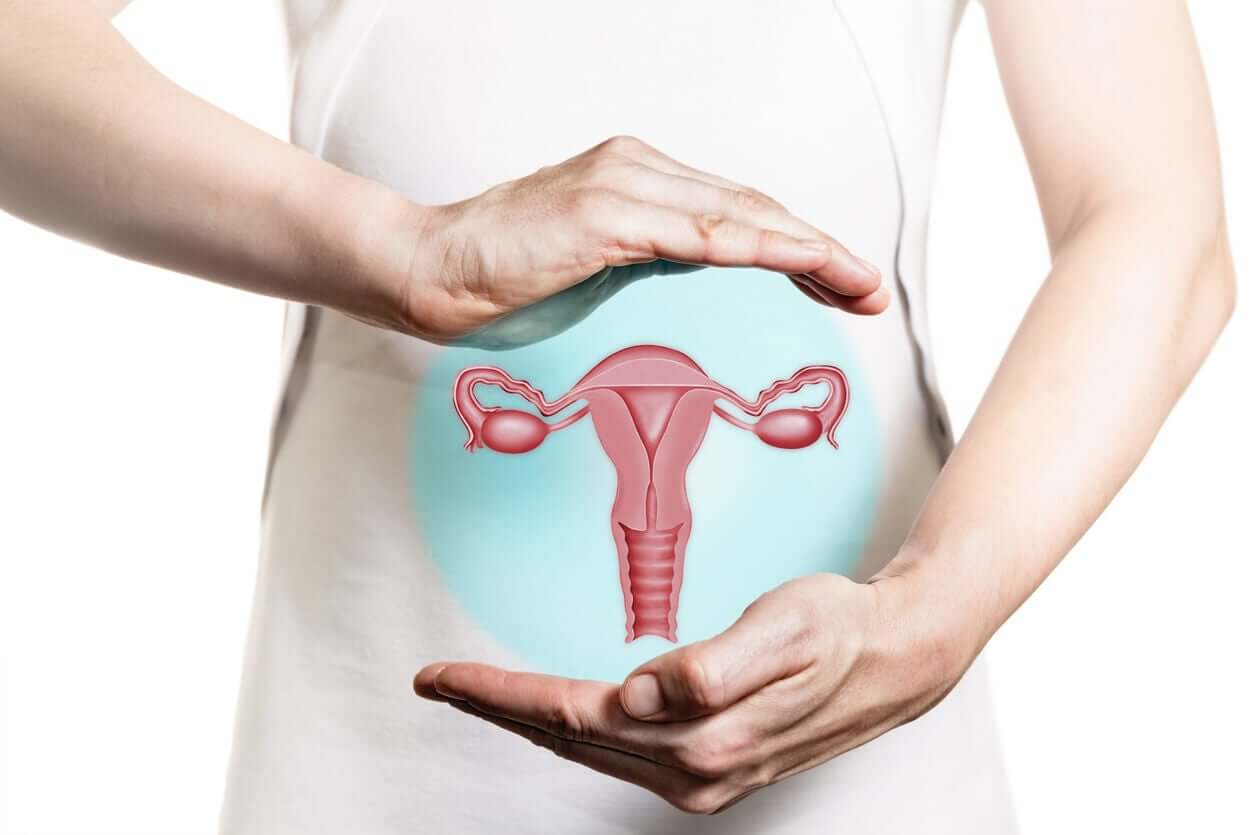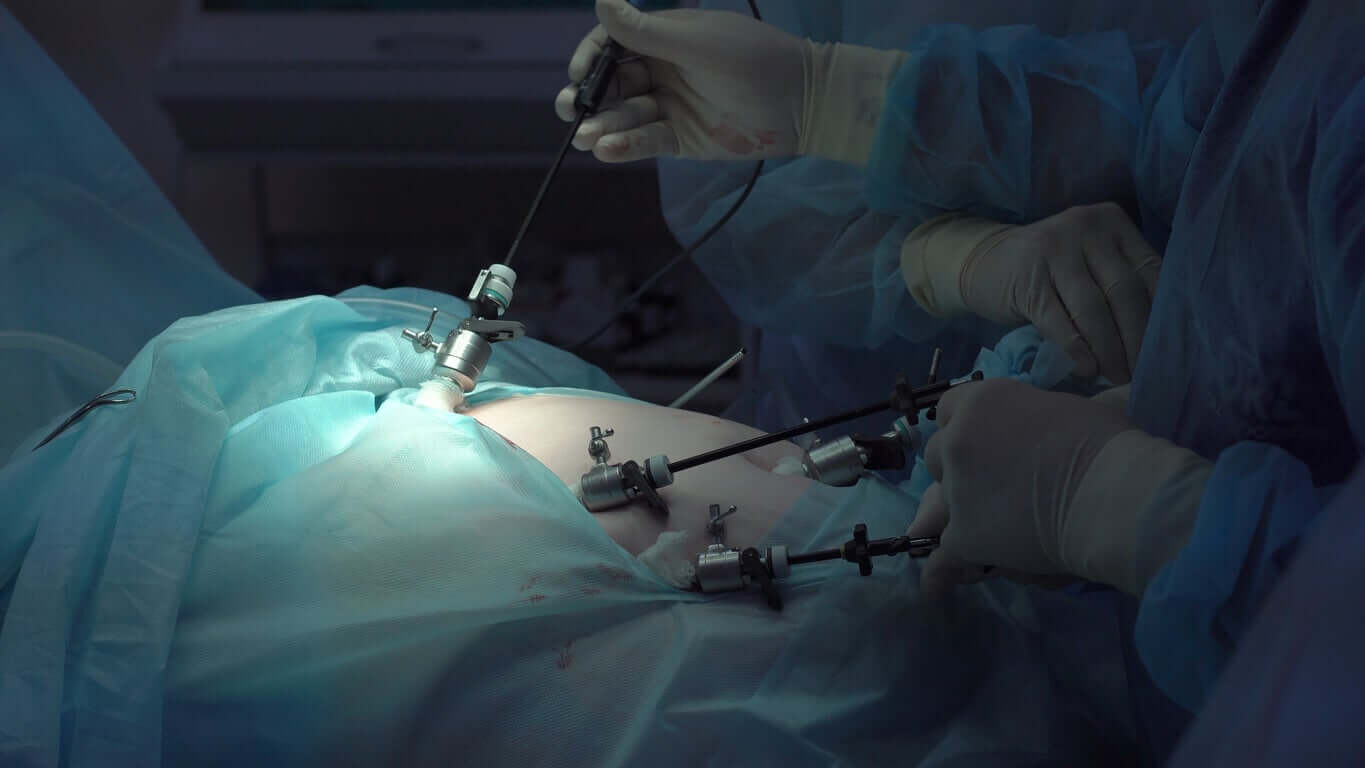Ovarian Torsion: Symptoms and Treatment


Written and verified by the pediatrician Marcela Alejandra Caffulli
The female reproductive system is a machine that’s perfectly designed to conceive and host a life. However, no organ in our body is exempt from possible damage. That being said, the ovaries are one of the most vulnerable structures in this entire system due to their structure and location. Suspended by fine ligaments, they can rotate on themselves and lead to a potentially serious condition called ovarian torsion.
One of the main determinants of a good prognosis of this condition is time, so it’s essential that all women know the symptoms so they can go to the doctor as soon as possible. Today, we’ll tell you everything you need to know about this gynecological emergency.
The ovaries: Little giants
These small structures are about the size of an almond. However, “good things come in small packages” and the ovaries are no exception. From their tiny tissues, the eggs necessary to create a new life are produced month after month and, in addition, female sex hormones are manufactured.
For unclear reasons, the ovaries are suspended from muscle ligaments within the pelvic cavity. These are the following:
- Tubo-ovarian: Joins the ovary to the fallopian tube.
- Utero-ovarian: Establishes the union between the ovary and the womb.
- Mesovarum: This is a portion of the wide ligament of the uterus and through, this the ovarian branches of the uterine artery circulate.
- Suspensory ligament (or pelvic infundibulum): Joins the ovary with the pelvis and contains the ovarian vein and artery, as well as the nerve fibers of this structure.
Therefore, the ovaries don’t maintain a static posture but, on the contrary, move with the displacements of the tubes and due to sudden changes in position.

How does ovarian torsion occur?
As we’ve seen, the ovaries are suspended from cords (the ligaments) but aren’t attached to any structure. For this reason, they can be turned on their own axis and twist said ligatures.
The problem is that the blood vessels that supply oxygen and nutrients to the gonad pass within the mesovarium and pelvic infundibulum ligaments. Therefore, when these are twisted, their vessels collapse and blood is retained in them. After a period of time, the ovarian tissues lose vitality and become necrotic (die).
Predisposing factors
Although there’s no specific cause for ovarian torsion, there are some conditions that favor its appearance.
Next, we’ll describe the factors that are most frequently associated with ovarian torsion:
- Long and mobile tubes (characteristic of adolescence)
- A solid or cystic mass that causes an enlargement of the ovary
- Right ovary (the right colon, more specifically the cecum, allows greater mobility)
- Hormonal hyperstimulation (from puberty, pregnancy, or fertilization treatments)
- Intense and impact exercise
- Tubal ligation
In general, ovarian torsion is a common illness in women of childbearing age, although cases have also been described in prepubertal girls.
What symptoms suggest the possibility of ovarian torsion?
Ovarian torsion is one of the main causes of acute gynecological abdomen. As such, it’s characterized by causing intense lower abdominal pain, which is accompanied by general symptoms and which leads to a progressive deterioration of the woman’s state of health (Provenzano, 2006).
Although none of the symptoms that accompany this disease are exclusive to it, the most notable are the following:
- Sharp, stabbing abdominal pain in the lower abdomen
- Sometimes with radiation to the pelvis or back
- Nausea and vomiting
- Fever (especially when there’s necrosis of the ovary)
- Vaginal bleeding
- Decay and tiredness
- It can cause a palpable mass in the abdomen
Diagnosis from the clinical manifestations isn’t easy, as it resembles many intestinal or urinary pathologies. However, ovarian torsion should be considered in every woman, especially during the fertile period of her life.
What’s the treatment for ovarian torsion?
Once this diagnosis is suspected, it’s a good idea to perform a Doppler ultrasound of the ovary in order to determine the presence or absence of vascular flow in this structure. This not only corroborates the presumption but also determines the urgency of the treatment.
In general, when the ovary doesn’t return to its normal state spontaneously, then surgery will be necessary in order to do it manually.
Laparoscopy versus laparotomy

One of the most conservative techniques is laparoscopy, which involves the introduction of a video camera and some very small forceps through the navel and other abdominal openings. This practice works as a diagnostic and therapeutic element, as it can facilitate the repositioning of the ovary.
During the same surgical act, the specialist will assess the state of the organ and determine its viability. Although there are very characteristic signs of ovarian necrosis, some studies suggest that the visual appreciation of the surgeon isn’t infallible and that it often leads to wrong decisions.
On the other hand, when cysts or tumor masses are found, the surgeon will remove these pathological structures and will try to leave as much healthy ovary as possible.
In all the circumstances in which it’s possible, the ovary should be left inside the abdominal cavity, especially when it comes to women of childbearing age. However, there’s no universal consensus that indicates in which cases it’s convenient to completely remove the gonad.
Finally, in those cases in which the laparoscopic technique isn’t the best option, conventional surgery or laparotomy will be chosen.
The importance of early diagnosis
As we’ve seen throughout the article, the ovaries are very important organs for women. Not only for reproductive purposes, but for their health in general as they’re the glands that produce sex hormones.
Paradoxically, they’re vulnerable and extremely sensitive structures. For this reason, it’s important to preserve their health as much as possible.
Ovarian torsion can affect any woman, even girls before they start their period. Therefore, it’s important to know how what ovarian torsion involves in order to ensure an urgent consultation and an early diagnosis.
The female reproductive system is a machine that’s perfectly designed to conceive and host a life. However, no organ in our body is exempt from possible damage. That being said, the ovaries are one of the most vulnerable structures in this entire system due to their structure and location. Suspended by fine ligaments, they can rotate on themselves and lead to a potentially serious condition called ovarian torsion.
One of the main determinants of a good prognosis of this condition is time, so it’s essential that all women know the symptoms so they can go to the doctor as soon as possible. Today, we’ll tell you everything you need to know about this gynecological emergency.
The ovaries: Little giants
These small structures are about the size of an almond. However, “good things come in small packages” and the ovaries are no exception. From their tiny tissues, the eggs necessary to create a new life are produced month after month and, in addition, female sex hormones are manufactured.
For unclear reasons, the ovaries are suspended from muscle ligaments within the pelvic cavity. These are the following:
- Tubo-ovarian: Joins the ovary to the fallopian tube.
- Utero-ovarian: Establishes the union between the ovary and the womb.
- Mesovarum: This is a portion of the wide ligament of the uterus and through, this the ovarian branches of the uterine artery circulate.
- Suspensory ligament (or pelvic infundibulum): Joins the ovary with the pelvis and contains the ovarian vein and artery, as well as the nerve fibers of this structure.
Therefore, the ovaries don’t maintain a static posture but, on the contrary, move with the displacements of the tubes and due to sudden changes in position.

How does ovarian torsion occur?
As we’ve seen, the ovaries are suspended from cords (the ligaments) but aren’t attached to any structure. For this reason, they can be turned on their own axis and twist said ligatures.
The problem is that the blood vessels that supply oxygen and nutrients to the gonad pass within the mesovarium and pelvic infundibulum ligaments. Therefore, when these are twisted, their vessels collapse and blood is retained in them. After a period of time, the ovarian tissues lose vitality and become necrotic (die).
Predisposing factors
Although there’s no specific cause for ovarian torsion, there are some conditions that favor its appearance.
Next, we’ll describe the factors that are most frequently associated with ovarian torsion:
- Long and mobile tubes (characteristic of adolescence)
- A solid or cystic mass that causes an enlargement of the ovary
- Right ovary (the right colon, more specifically the cecum, allows greater mobility)
- Hormonal hyperstimulation (from puberty, pregnancy, or fertilization treatments)
- Intense and impact exercise
- Tubal ligation
In general, ovarian torsion is a common illness in women of childbearing age, although cases have also been described in prepubertal girls.
What symptoms suggest the possibility of ovarian torsion?
Ovarian torsion is one of the main causes of acute gynecological abdomen. As such, it’s characterized by causing intense lower abdominal pain, which is accompanied by general symptoms and which leads to a progressive deterioration of the woman’s state of health (Provenzano, 2006).
Although none of the symptoms that accompany this disease are exclusive to it, the most notable are the following:
- Sharp, stabbing abdominal pain in the lower abdomen
- Sometimes with radiation to the pelvis or back
- Nausea and vomiting
- Fever (especially when there’s necrosis of the ovary)
- Vaginal bleeding
- Decay and tiredness
- It can cause a palpable mass in the abdomen
Diagnosis from the clinical manifestations isn’t easy, as it resembles many intestinal or urinary pathologies. However, ovarian torsion should be considered in every woman, especially during the fertile period of her life.
What’s the treatment for ovarian torsion?
Once this diagnosis is suspected, it’s a good idea to perform a Doppler ultrasound of the ovary in order to determine the presence or absence of vascular flow in this structure. This not only corroborates the presumption but also determines the urgency of the treatment.
In general, when the ovary doesn’t return to its normal state spontaneously, then surgery will be necessary in order to do it manually.
Laparoscopy versus laparotomy

One of the most conservative techniques is laparoscopy, which involves the introduction of a video camera and some very small forceps through the navel and other abdominal openings. This practice works as a diagnostic and therapeutic element, as it can facilitate the repositioning of the ovary.
During the same surgical act, the specialist will assess the state of the organ and determine its viability. Although there are very characteristic signs of ovarian necrosis, some studies suggest that the visual appreciation of the surgeon isn’t infallible and that it often leads to wrong decisions.
On the other hand, when cysts or tumor masses are found, the surgeon will remove these pathological structures and will try to leave as much healthy ovary as possible.
In all the circumstances in which it’s possible, the ovary should be left inside the abdominal cavity, especially when it comes to women of childbearing age. However, there’s no universal consensus that indicates in which cases it’s convenient to completely remove the gonad.
Finally, in those cases in which the laparoscopic technique isn’t the best option, conventional surgery or laparotomy will be chosen.
The importance of early diagnosis
As we’ve seen throughout the article, the ovaries are very important organs for women. Not only for reproductive purposes, but for their health in general as they’re the glands that produce sex hormones.
Paradoxically, they’re vulnerable and extremely sensitive structures. For this reason, it’s important to preserve their health as much as possible.
Ovarian torsion can affect any woman, even girls before they start their period. Therefore, it’s important to know how what ovarian torsion involves in order to ensure an urgent consultation and an early diagnosis.
All cited sources were thoroughly reviewed by our team to ensure their quality, reliability, currency, and validity. The bibliography of this article was considered reliable and of academic or scientific accuracy.
- Guile SL, Mathai JK. Ovarian Torsion. 2021 Jul 21. In: StatPearls [Internet]. Treasure Island (FL): StatPearls Publishing; 2021 Jan–. PMID: 32809510. Disponible en: https://pubmed.ncbi.nlm.nih.gov/32809510/
- P. Sevilla Ramos, M.J. Hernández Bejarano, E. Cid París, M. Alija Merillas, J.M. Jiménez Bustos. Torsión ovárica como causa de dolor abdominal agudo en una niña prepuberal. Acta Pediatr Esp. 2012; 70(11): e47-e50. Disponible en: https://actapediatrica.com/index.php/secciones/notas-clinicas/797-torsi%C3%B3n-ov%C3%A1rica-como-causa-de-dolor-abdominal-agudo-en-una-ni%C3%B1a-prepuberal#.YYl0HWDMLIV
- Zamboni M, Palomino G, Nuñez F et al. Manejo conservador de la torsión anexial: ¿una alternativa o una obligación frente a un posible error de apreciación por parte del cirujano? Revista chilena de obstetricia y ginecología. 2010; 76. 248-256. DOI 10.4067/S0717-75262011000400007. Disponible en:https://www.researchgate.net/publication/262439838_Manejo_conservador_de_la_torsion_anexial_una_alternativa_o_una_obligacion_frente_a_un_posible_error_de_apreciacion_por_parte_del_cirujano
- Álvarez Sánchez Aida de la Caridad. Torsión de ovario. Rev Cubana Obstet Ginecol [Internet]. 2011 Mar [citado 2021 Nov 08] ; 37( 1 ): 117-124. Disponible en: http://scielo.sld.cu/scielo.php?script=sci_arttext&pid=S0138-600X2011000100013&lng=es.
- Provenzano S, Lange D, Tatti S. Manual de Ginecología. 1 edición. Rosario. Corpus Editorial. 2006. ISBN 950-9030-20-1
This text is provided for informational purposes only and does not replace consultation with a professional. If in doubt, consult your specialist.








